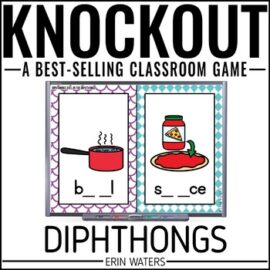While April may technically be National Poetry Month, poems in the classroom should be year-round—in my humble opinion. Having poetry templates for elementary students on hand can make it a lot easier. Poetry gets a bad reputation–it's not all flowers, butterflies, and rhymes. In fact, some of the best types of poetry are unrhymed pieces of art. If you've been wondering how to give your students a love for poetry, I've got some free poetry templates and poetry ideas to share with you today–take a look!

In this article, I'll be discussing 5 types of poetry templates you can use with your students, give you an example of each type of poem, and give you a brief overview of how to teach it in your classroom.
5 Senses Poem – Poetry Templates for Elementary Students Who Love Life

What it is: This poem type is simple and straightforward. Students will choose a topic (either individually or as a class) and think of the senses that topic evokes. This type of poem lends itself well to whole-class brainstorming first before the writing portion.
Why it works: This is one of my favorites because it integrates science and writing. In addition, senses are universal and students of all writing stages and abilities can relate to this material.
✪ Tip for teaching: Split students into 5 groups and assign each one a sense. Group members will brainstorm and share their ideas out with the class.
Acrostic Poem – Poetry Templates for Elementary Students Who Love Letters

What it is: The first letters of each line spell out the topic of the poem. For example, in the above poem, you'll see ‘SUMMER' spelled out vertically. This is also the structure that will determine the initial sounds of each line.
Why it works: Students with basic phonics can grasp the idea of this poem. To give an extra boost, brainstorm words for each letter as a class and make a word bank for students to choose from. More independent writers can choose their own topic and words.
✪ Tip for teaching: Start with mini-poems and give students simple CVC words to write their first acrostic. This doesn't have to be formal–just a quick jot in a notebook or on a whiteboard.
Haiku – Poetry Templates for Elementary Students Who Love Stories

What it is: A traditional haiku is a 3-lined poem that has 5 syllables in the first line, 8 syllables in the second, and 5 syllables in the first line. All 3 lines are about a topic or tell a story from one line to the next.
Why it works: This one is great for lower grades because the number of syllables in a concept students start learning as early as preschool.
✪ Tip for teaching: This book is so, so, SO good for haikus! I love the way the haikus are more story-like and then there's a “reveal” page to show the subject of the poem.
Cinquain – Poetry Templates for Elementary Students Who Love Art

What it is: A cinquain is a 5-line poem that incorporates descriptive language on every line. Adjectives and verbs are the stars of the show, with the noun being the topic of it all. It's important to note there are several possible formats for cinquains, but I've chosen the most student-friendly one for this purpose.
Why it works: Students will get an authentic use of parts of speech. Because cinquains focus so heavily on descriptive language, this is also a great one for students to illustrate.
✪ Tip for teaching: Encourage students to incorporate each line into the illustration for this poem. using the example above, imagine how great of an image a student could create to show the “dripping, bursting, slurping” of watermelon.
Ode – Poetry Templates for Elementary Students Who Love LOVE

What it is: The ode is a classic declaration of love (traditionally to a person); however, it can manifest itself as an appealing way for students to express themselves–about anything. Ode to a food, place, animal, friend, and more–there is no limit to odes and they are easily adaptable for your student interests.
As far as the structure of the poem itself, it's loose and what you want to make of it. The above format is student-friendly.
Why it works: You can take this one as seriously or as jokingly as you wish. You may choose to narrow the focus topic (ex: giving students guidelines such as “Types of food, your favorite school supply, etc.).
✪ Tip for teaching: Read the book, Crown: An Ode to the Fresh Cut as a hook or inspiration.
Other types of poems to teach in your elementary classroom:
- Limerick (usually giggle-inducing)
- Sestina (great for whole class or group poetry-writing)
- Diamante (similar to cinquain)
- Color (great for early elementary)
- Rainbow (makes a great craftivity)
- Tercet/couplet (a rhyming scheme or short standalone poem)
- Calligram (a poem made into the shape of the topic)
You can download the 5 free poetry templates featured in this post here.
Looking for more poetry ideas? Read about ways to celebrate Poem In Your Pocket Day here.








 Arm you with high-quality tools: Sleep peacefully at night knowing you’re doing what’s best for your students.
Arm you with high-quality tools: Sleep peacefully at night knowing you’re doing what’s best for your students. Save your energy: Provide resources that cost you little energy (that stuff is precious)---but have high impact on your students.
Save your energy: Provide resources that cost you little energy (that stuff is precious)---but have high impact on your students. Light your spark: Putting fun back into your classroom after the hardest teaching years can be just what you and your students need.
Light your spark: Putting fun back into your classroom after the hardest teaching years can be just what you and your students need.
Leave a Comment